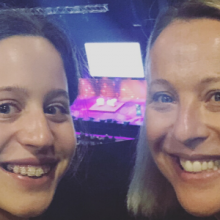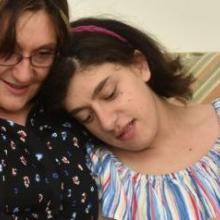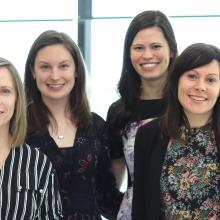Speech and language disorders

Speech and language disorders can make it difficult for children to speak, read and write.
As many as one in five preschool children experience language and speech disorders, such as stuttering or childhood apraxia of speech (CAS). Some children grow out of their speaking disorder, but others go on to have long-term difficulties with communication.
Childhood apraxia of speech affects the brain’s ability to direct and coordinate the movements for speech. This causes difficulty speaking which can be hard for others to understand.
Speech impediments such as stuttering can make it hard for children to speak fluently. Children may repeat words, lengthen sounds or experience blocks in speech where they cannot produce a particular sound, word or words.
Genetic factors are thought to play a key role in speech and language disorders. Recently, an increasing number of genes are being identified as a cause of childhood apraxia of speech.

Who does it affect?
Who does it affect?
Understanding the causes of language disorders will improve advancements in treatment.
- In Australia, more than 500,000 children have a speech and language disorder.
- One in five children in Australia starts school with a speech and language disorder.
- Children with speech and language disorders are three times more likely to have low academic performance, despite typically having average IQs.
- One in 1,000 children has childhood apraxia of speech, the most severe child speech impediment. Childhood apraxia is debilitating as children fail to learn to speak clearly and combine sounds properly. It also affects the timing and sequencing of words.
Our speech and language research
Our speech and language research
Many speech and language disorder treatments focus on symptoms without targeting the cause. Learning more about genetic and other underlying causes will help identify who may be at risk and allow more targeted language and speech therapies.
Murdoch Children’s Research Institute leads The Centre of Research Excellence in Speech and Language, an international collaboration of experts that aims to identify and understand the causes of developmental language disorders and develop therapies. In the future, blood or saliva tests may detect genes responsible for some speech disorders, ensuring earlier diagnosis and targeted intervention.
Our genetics of stuttering speech study is the world’s largest survey of the impact of stuttering disorder, recruiting 3,000 adults and children who stutter from Australia and New Zealand. It also aims to pinpoint genes that predispose to stuttering. Initial findings of the first 1,000 participants show that half report a family history of stuttering.
Our genetics of speech disorders study is researching genetic causes by recruiting children and adults with severe speech disorders including childhood apraxia. Pinpointing which genes are responsible may lead to more targeted treatments.
Another study is investigating if the drug methylphenidate, normally used in attention deficit hyperactivity disorder (ADHD), can improve speech and language in children with apraxia. It’s the first trial of its type to evaluate this drug as a potential childhood apraxia of speech treatment.
Impacts of our research

Impacts of our research
- With collaborators, we led research that discovered nine new genes linked to apraxia. Our genetics of speech disorders study revealed childhood apraxia is caused by a single gene in about one in three affected children.
- We led breakthrough research that has identified causes of apraxia and stuttering by identifying anomalies in key speech pathways of the brain.
- We lead The Centre of Research Excellence in Speech and Language which uses brain scans and clinical assessments to pinpoint brain regions linked to speech disorders and learning styles that can bypass pathways.
- Our work has been translated into a world-first speech genomics clinic at The Royal Children’s Hospital which studies a person’s entire DNA, delivering diagnoses. This research, including counselling and clinical management, is improving outcomes for children worldwide with speech disorders.
- We have developed a new digital assessment tool that recognises and diagnoses all subtypes of speech disorders to improve diagnostic accuracy, efficiency and treatment.
Our vision
Our vision
Our vision is to develop better interventions so children with speech and language difficulties reach their full potential. Speech and language difficulties put children at much greater risk of literacy and academic difficulties. Children with these conditions also experience communication breakdown, where people struggle to understand what affected children say. Communication breakdown can have major negative long-term effects on children’s psychological and social outcomes. Our work aims to improve children’s self-esteem, ability to form social relationships, academic achievements and quality of life.












